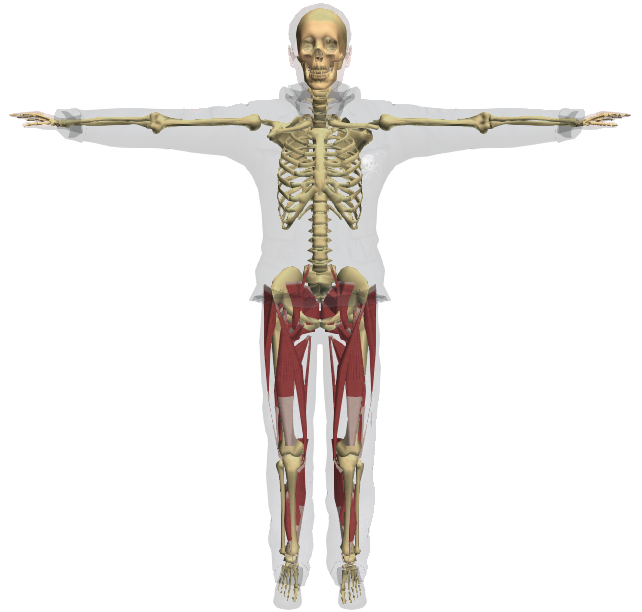A scalable geometrical model for musculotendon units
| Francis Laclé | Nicolas Pronost |
| Utrecht University | Utrecht University |
| Department of Information and Computing Sciences | Department of Information and Computing Sciences |
| Games and Virtual Worlds | Games and Virtual Worlds |
| Université de Lyon, CNRS, Université Lyon 1 | |
| LIRIS - UMR5205 |
Abstract :
Physics-based simulation of systems such as virtual humans has benefited from recent advances in muscle actuation. However, to be manageable for motion controllers, muscles are usually solely represented by their action line, a polyline that does not include data on the tridimensional geometry of the muscle. This paper focuses on combining, by a controllable enhancement process, a functional and biomechanical model of musculotendon units with its high resolution geometrical counterpart. The method was developed in order to be invariant to spatial and polygonal configurations and to be scalable in both longitudinal and latitudinal directions. Results with 48 musculotendon units for the lower body show a drop of 84% with respect to the number of vertices when compared with the high resolution model, while maintaining the functional information. A real-time simulation experiment resulted in a runtime of 135 Hz.
Paper :
Download author-created version or the original publication at onlinelibrary.wiley.com.
Video :
Download the video (18 MB)
